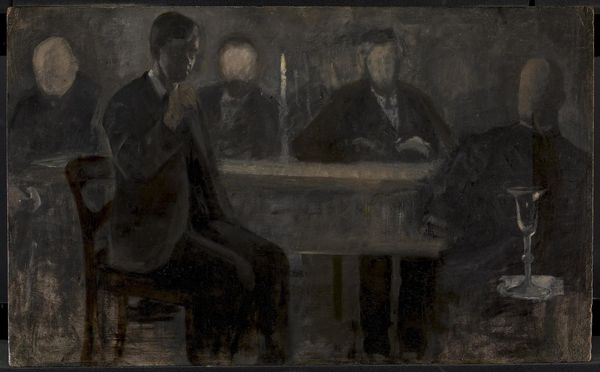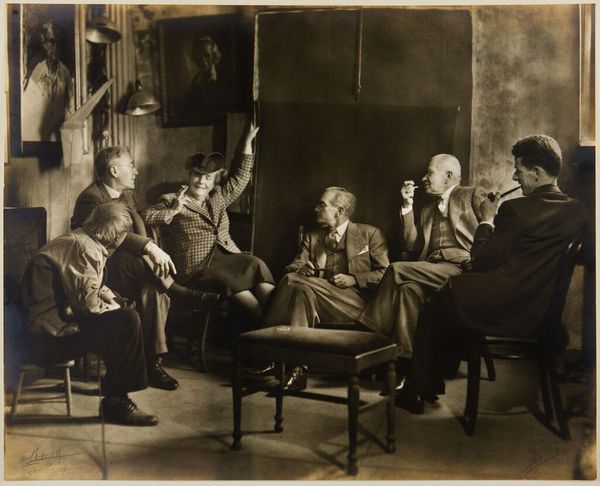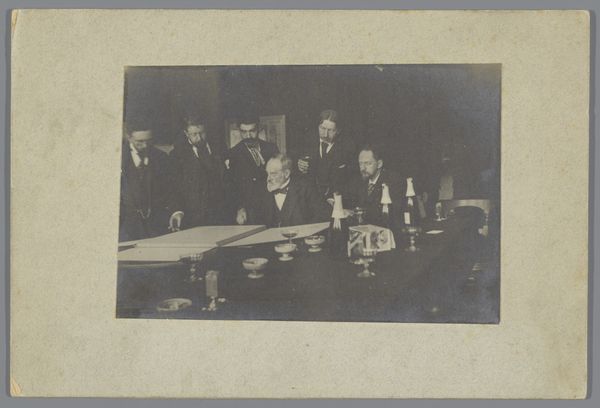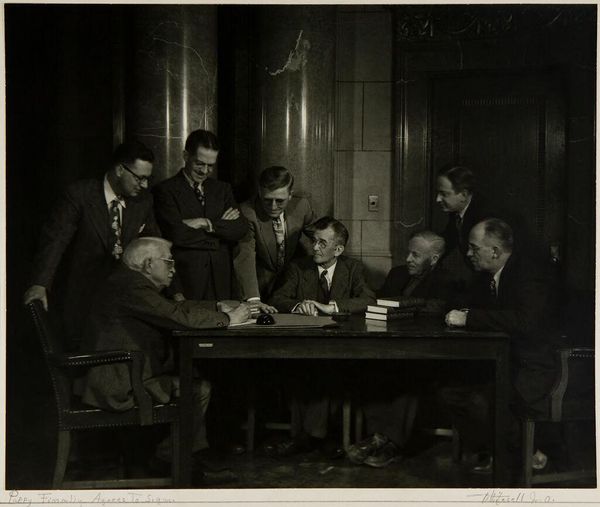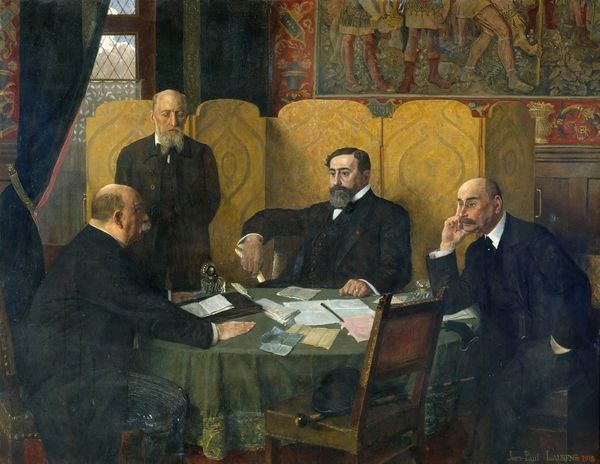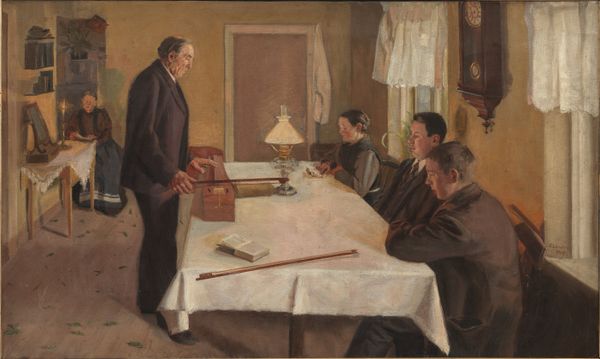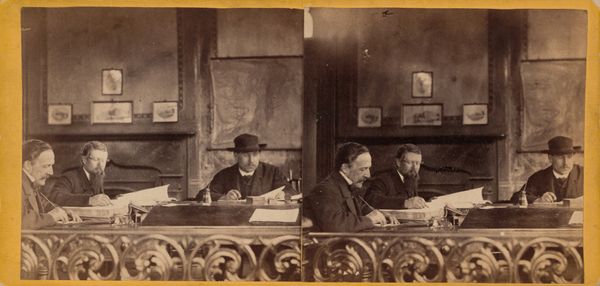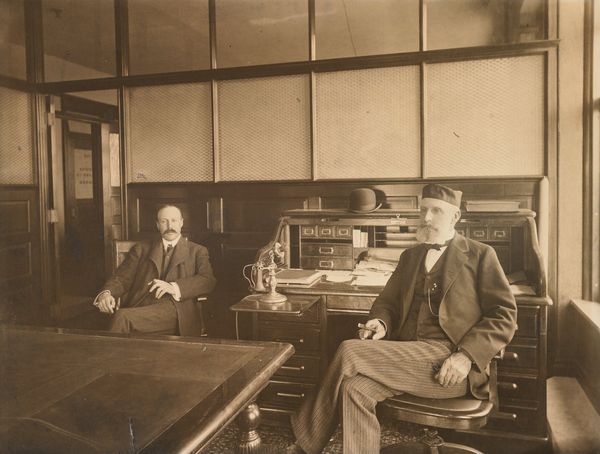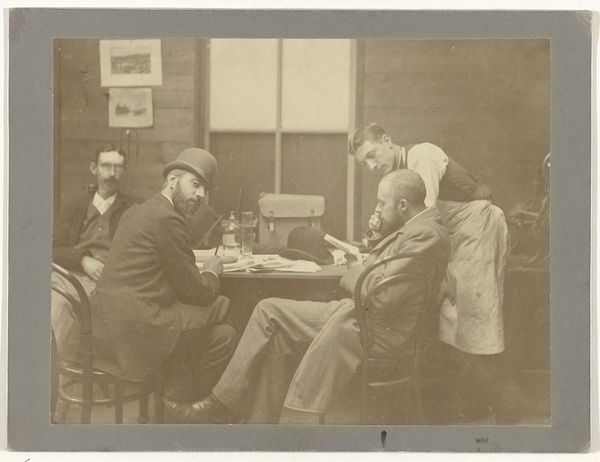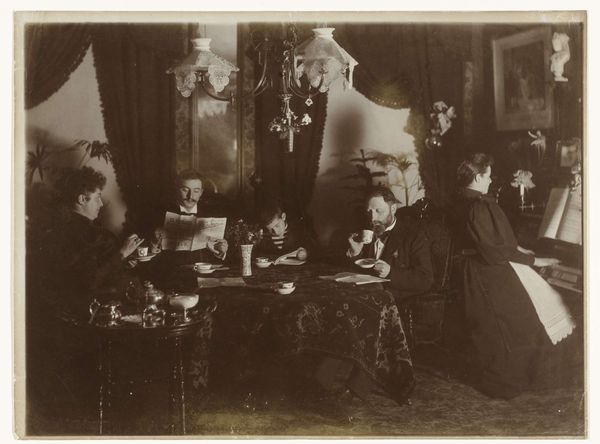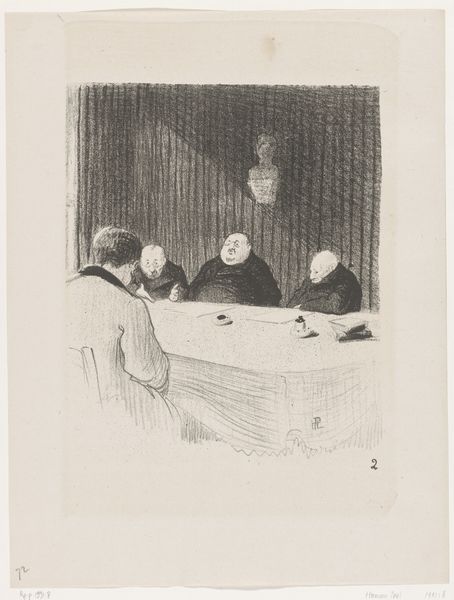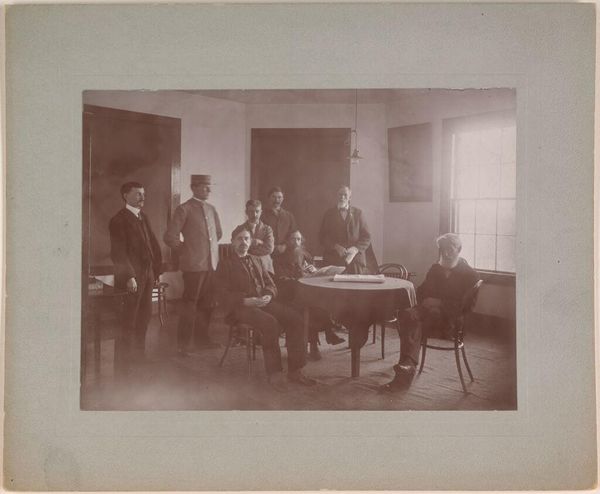
painting
#
portrait
#
figurative
#
painting
#
intimism
#
group-portraits
#
symbolism
#
genre-painting
Copyright: Public Domain: Artvee
Curator: Hammershøi’s “Five Portraits,” painted in 1901, depicts a somber gathering. What strikes you initially? Editor: The tonal restraint. That near-monochromatic palette really establishes a mood of quiet contemplation, almost bordering on unease. There's such weight given to the structure of light and shadow, to the angles of faces... Curator: Precisely. It's oil on canvas, of course. Consider the implications of this gathering though: these are members of the art society, their livelihoods, their passions intertwined with one another and Hammershøi’s vision. Editor: Note the composition too. The positioning of the subjects, their gazes either averted or directed out towards us – the viewer becomes an implicit part of the scene, invited into this hushed exchange. Curator: And a viewer in 1901 would immediately recognize the dress of that class and recognize a symbol of their economic class, and potentially even find this tableau strangely intimate... It also appears quite formal, but look at the man with his feet casually up. Editor: That adds such interesting tension! Breaking that formality through posture. We can’t ignore the sparseness either; those glasses on the white cloth provide subtle visual relief in a largely muted space. Curator: That’s true! It brings an element of domestic consumption, a bourgeois subject in all its complexity. Editor: There's a clear exploration of line and form here, playing on classical themes with restraint and reserve... a visual language distinct and introspective. The semiotics really enhance how we view the artwork today. Curator: I think what we see is how these individual artists engage with labor to portray their artistic communities. It reminds me about broader societal shifts reflected on this small gathering: What does art represent, who owns art, and who makes art, right? Editor: Ultimately it’s through the convergence of material conditions that something formally arresting is possible. And as a result we arrive at a really hauntingly compelling artwork. Curator: Indeed! It makes this, for me, another instance of what material engagement and symbolism meant to 19th century artists in particular.
Comments
No comments
Be the first to comment and join the conversation on the ultimate creative platform.
